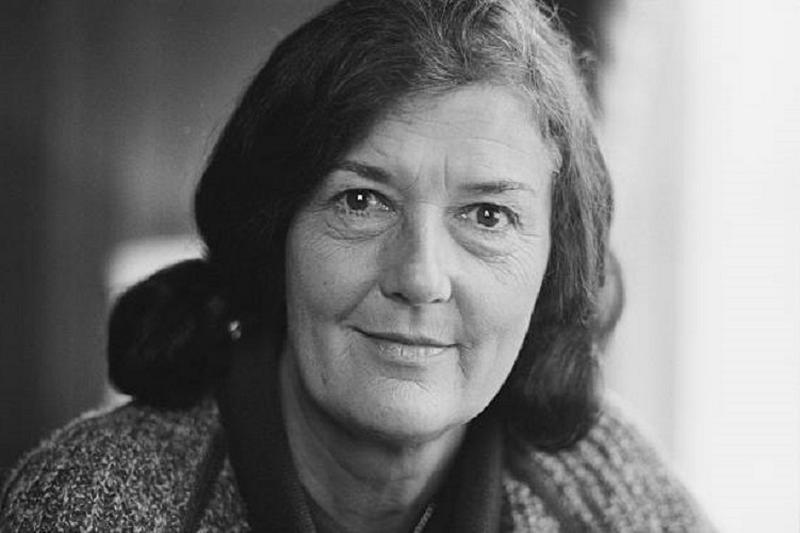The Life And Mysterious Death Of Dian Fossey
By | July 31, 2022

Dian Fossey was born in San Francisco in1932. She had a challenging childhood, and because of her personal insecurity, she turned to animals, starting with her first pet, a goldfish. By the age of six, she had started riding horses. Eventually, she pursued a college degree in Occupational Therapy and moved to Kentucky, where she worked as an occupational therapist at the Korsair Crippled Children’s Hospital in Louisville.
A Safari Changed Her Life
In 1963, she borrowed a year’s salary and took out her life savings to visit Africa for seven weeks. While on safari, she met the Leakeys at Olduvai Gorge, and Louis Leakey talked to Fossey about Jane Goodall’s work and the importance of research on the great apes. She also met Kenyan wildlife photographers, Joan and Alan Root, who allowed her to camp behind their camps. Here, Fossey first encountered wild mountain gorillas. Once she returned to Louisville, she published three articles about her visit to Africa. Three years after this initial African trip, she met Leakey once again while he was on a lecture tour, and he lined up funding for her to study gorillas in the same manner as Jane Goodall had studied chimpanzees. By early 1967, she began her field study at Kabara in Congo but political unrest made it impossible to remain. She instead began to work on the Rwandan side of the Virungas instead. In Rwanda, she was introduced to Alyette DeMunck who helped her find a site for study in the foothills of Mt. Bisoke.

She Became The Authority On Mountain Gorillas
Fosse founded the Karisoke Research Center, a remote rainforest camp, on September 24, 1967. While there, the locals came to know her as “The woman who lives alone on the mountain.” During her studies, she made numerous discoveries about gorilla social relationships, hierarchies, vocalization, and their diet, among other things. She obtained her Ph.D. from Cambridge University in 1980 and was recognized as the world’s leading authority on the physiology and behavior of mountain gorillas.
After The Murder Of Digit
Although hunting had been illegal in the national park of the Virunga Volcanoes since 1920, park conservators did not enforce the law, and were liable to bribes from poachers. During the day on New Year’s Eve, 1977, Digit, Fossey’s favorite gorilla, was killed by poachers, as he tried to defend his group. He sustained five spear wounds but managed to kill one of the poacher’s dogs, which allowed the 13 members of his group to escape. Digit, who was 12, was decapitated and his hands were cut off for ashtrays. After the death of Digit, Fossey created the Digit Fund to raise money to support anti-poaching patrols and to destroy the poachers’ traps in the study area; they destroyed 987 traps in four months in 1979. However, the Fossey patrol did not operate in the eastern portion of the park, and the poachers killed more than a dozen gorillas and practically eradicated all of the elephants. As she devoted more of her time to poaching prevention and less to research, she started to aggressively (and sometimes violently) target poachers. She even used firecrackers, magic tricks, and cheap toys to mystify the Africans and sometimes she pretended to practice black magic as well.

Her Unsolved Murder
She was found murdered in the bedroom of her cabin in the camp on December 27, 1985. Her house servant summoned Wayne Richard McGuire to the scene where she had been bludgeoned to death and her face was split with a machete. Her cabin had been ransacked, but because nothing was taken, the motive was not believed to be robbery. She was buried next to Digit in the gorilla graveyard. McGuire returned to the U.S. in July 1987.
People Were Falsely Accused
Her entire staff was arrested after her death. This included Emmanuel Rwelekana, a tracker. He, unlike the rest, was not released, and was later found dead in prison when he allegedly hanged himself, although many do not believe he killed himself. McGuire, her research assistant, was tried and convicted in absentia in Rwandan courts; his alleged motive: he was trying to steal her manuscript. His penalty was death by shooting, but no extradition treaty exists between the U.S. and Rwanda.
Her Work Has Made A Difference
Based on some of the evidence, another theory has come to light: that her murder was orchestrated by someone powerful because of her anti-poaching behavior and the evidence she had of gold smuggling happening in the country. Rwandan authorities later accused Protais Zigiranyirazo, a local government official connected to the Rwandan genocide, of ordering Fossey’s murder. While the truth about Fossey’s murder may never be completely known, what is true is that her work has led to a rebound in the mountain gorilla population. As her final journal entry read, “When you realize the value of all life, you dwell less on what is past and concentrate more on the preservation of the future.”
